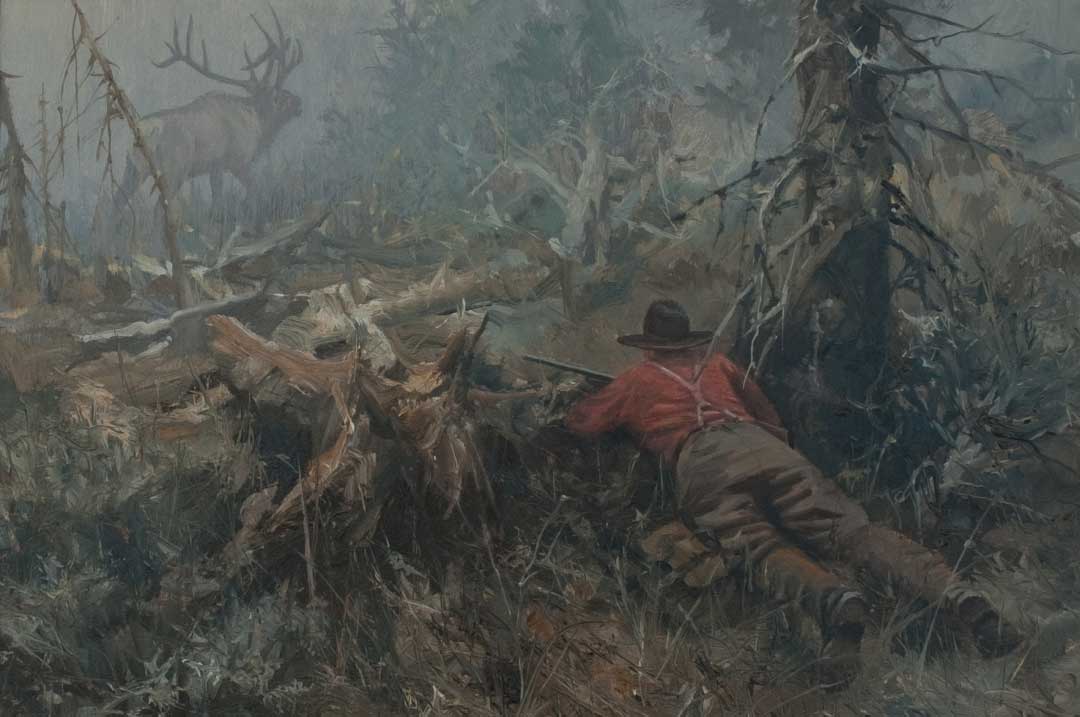In due time Mollygrubs Messer recovered physically from his rude and painful introduction to the miseries of poison ivy while on a Boy Scout outing, but mental torment remained in the form of regular taunting from his schoolmates and fellow Scouts. The well-meaning but singularly misguided attentions of his doting mother, Mrs. Karen Messer, added greatly to the growing boy’s already weighty burden.
In order to understand fully the nature of Mrs. Messer, some awareness of the rhythms of life in a small town surrounded by a rural community is needed. Karen was what some of the more outspoken folks in the little hamlet of Stony Lonesome called a busybody or “old biddy.” She wasn’t actually all that old but determination to stick her nose into the business of others, force her way to the forefront of everything going on in the ranks of her church and community, and in general behave precisely in the protective and self-righteous fashion of a mother hen (a biddy) looking after her brood of chicks amply justified the views others held of her. Her brood may have numbered but one chick, but her bossiness and constant meddling of behalf of Mollygrubs made his adolescence an unfolding chronicle of misery.
There was no better example than her unwanted efforts on his behalf than in the months immediately preceding the annual highlight of the Stony Lonesome social season. Larger areas and places of grand pretensions had their debutante balls, junior-senior proms, spring formals, cotillions, and other events to herald teenage rites of passage. Then and now most such events are engineered, indeed gerrymandered, by a cadre of local mothers hell bent on seeing that their offspring were “raised right” and readied for the wider world of adulthood in proper fashion. Similar sentiments prevailed in Stony Lonesome with one notable difference — THE event of the year came in the form of an annual gala known as the Junior Conservation Ball.
Though it originated as a fundraiser for local outdoor-related projects such as improving habitat in trout streams, creating food plots on public land, and supporting the local high school’s shooting team, the event had long since morphed into something quite different. Local sportsmen may have come up with the concept for the Ball, but in the course of just a few years their spouses, along with a cadre of older women who had nothing better to do than meddle, gossip, snip at others whenever the opportunity arose, and look back with longing to days when their skin was tight and their eyes were bright, seized control.
The grand affair still raised money and wildlife still benefitted from at least a modest portion of the funds raised, although extensive expenditure went to planning, printing programs, purchasing favors for each of those in attendance, and ads in the local weekly newspaper. Quite possibly, as one or two daring menfolks had suggested while under the influence of several hefty drinks of tanglefoot and in exclusively male company at the local pool hall, some of the monies may have ended up in pockets of committee leaders. Since those leaders, once in place, would have required a solid charge of dynamite or a sordid sexual scandal to be removed, no one could know for sure.
One thing was certain, however. By the time W. McGillacuddy Messer turned 16 and was thereby eligible to participate in the Junior Conservation Ball, “Caring Karen” Messer, as his mother liked to describe herself, had masterfully wormed her way into a position of leadership on the planning committee that oversaw the annual event. Predictably, with her son’s repute and social future in the offing, she approached matters with planning and strategy worthy of the likes of Robert E. Lee, Douglas McArthur, or Erwin Rommel. The biggest obstacle she faced, and it was one she tackled head on and headstrong, was managing to get her son a date.
To say that Mollygrubs was persona non grata among the giggling gaggle of human geese that made up the current crop of Stony Lonesome belles would have been a resounding exercise in understatement. He courted like a stick of wood and had about as much sex appeal as a deceased, overripe ‘possum. Some teenage idols drew titters and rolling eyes from female onlookers whenever they walked down the halls of the local high school, pranced and preened in their football or basketball attire, or strolled the little town’s main street on Saturday afternoons. Mollygrubs engendered comparable reactions, along with pointing fingers and whispered comments, but they were not of an admiring nature. Instead, they involved recollection of his poison ivy escapade or other misadventures such as mention of some most unfortunate events involving hunting with erstwhile canine companions and an encounter with a polecat. But those are tales for another time.
The leader in all of this laughter at the expense of woeful Mollygrubs just happened to be the undisputed doyenne of the current “in” adolescent crowd of the fairer sex, the lovely Mitzi Merkel. No one ever accused Mitzi of being overly endowed with intellect, but this teenage queen possessed other assets that weighed heavily in her favor on adolescent balance scales. She came from a locally prominent and purportedly wealthy family, had flawless complexion, dressed in all the latest feminine finery and was statuesque to a degree that regularly evoked off-color comparisons to brick outhouses and other well-built structures. When she wore a low-cut blouse that revealed cleavage, comparisons to the Grand Canyon were unavoidable.
Indeed, one wistful member of the tale-telling, knife-swapping group of older timers who habituated the town square, irreverently but rather accurately known as “Dead Pecker Corner” (or in politer circles “Loafer’s Glory”), summed matters up with undeniable accuracy. When Miss Mitzi strolled by one fine summer day the sage of the local liar’s bench opined. “No wonder that girl’s got an hour glass waist. Any fool knows things don’t grow well in the shade.”
Inevitably the most prominent aspect of the comely teenager’s impressive anatomical attributes led to a slightly crude but physically accurate alteration of her given name. That rhyming play on Mitzi’s given name would lead to what was possibly the most humiliating of all Mollygrubs’ many embarrassing escapades. For the moment though, that lay in the future. All Karen Messer cared about, and when she set her mind to something she became an almost irresistible force of nature, was somehow managing to get her son a date with the lovely Miss Mitzi for the Junior Conservation Banquet.
***
In the next episode of our unfolding chronicles of Mollygrubs’ misadventures we will see how “Caring Karen” somehow managed to make that happen, only to have what she confidently predicted would be a high point of her offspring’s adolescence turn into an unmitigated disaster — something to be recounted time and again as the tale, passed from one generation to the next in the community of Stony Lonesome. Each year, as the Junior Conservation Banquet drew near, the shameful saga would be retold. In time it became a prominent aspect of Mollygrubs Messer’s unfolding emergence as a locally legendary laughingstock.
 Fishing for Chickens includes dishes that Casada has cooked and eaten, recipes handed down through family or close friends, food memories of an intensely personal nature, and an abiding love for a fast-fading way of life. In addition to twenty-four chapters focusing on such diverse topics as “Yard Bird,” Nuts,” and “New Year’s Fare,” the author includes nearly two hundred family recipes. With his story, Casada guides readers through a fast-vanishing culinary world that merits not only recollection but preservation. Buy Now
Fishing for Chickens includes dishes that Casada has cooked and eaten, recipes handed down through family or close friends, food memories of an intensely personal nature, and an abiding love for a fast-fading way of life. In addition to twenty-four chapters focusing on such diverse topics as “Yard Bird,” Nuts,” and “New Year’s Fare,” the author includes nearly two hundred family recipes. With his story, Casada guides readers through a fast-vanishing culinary world that merits not only recollection but preservation. Buy Now



